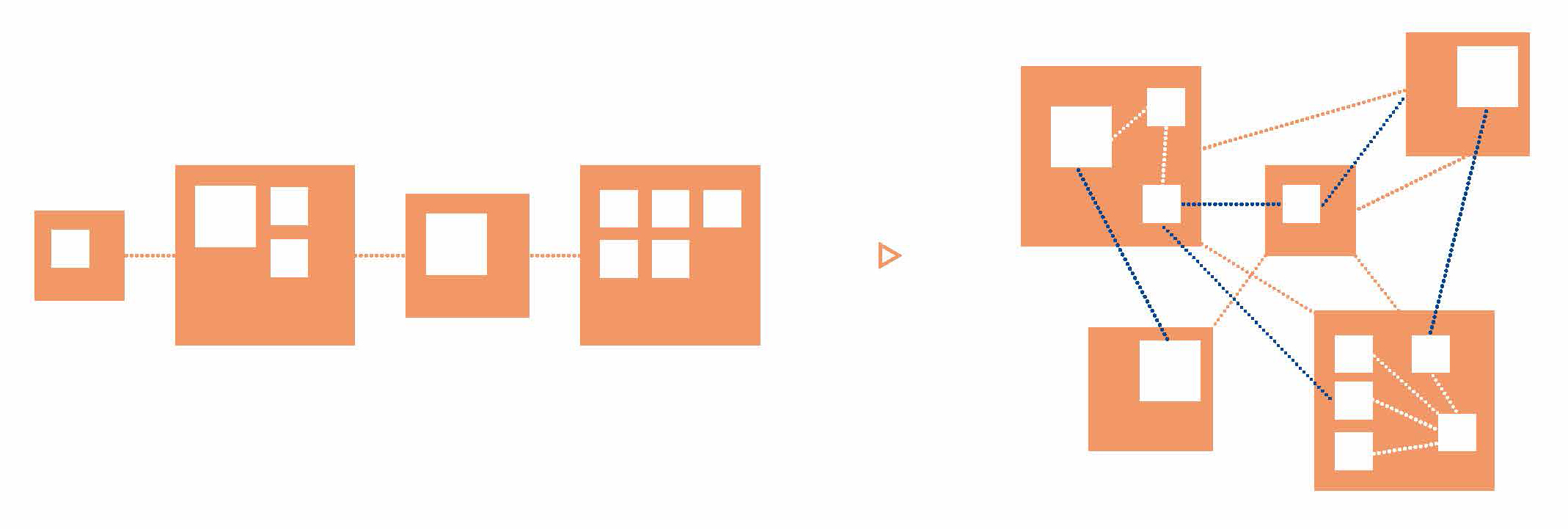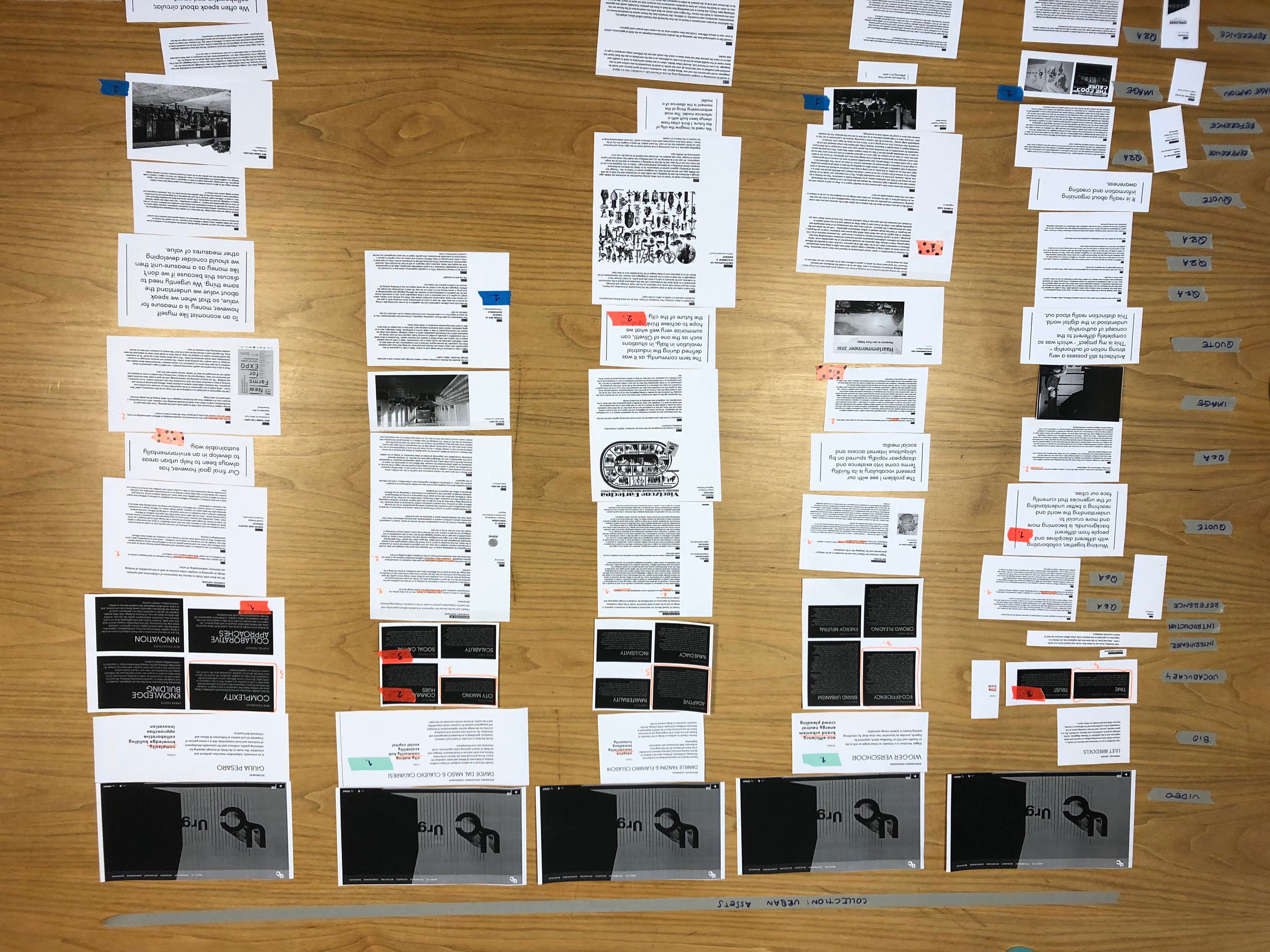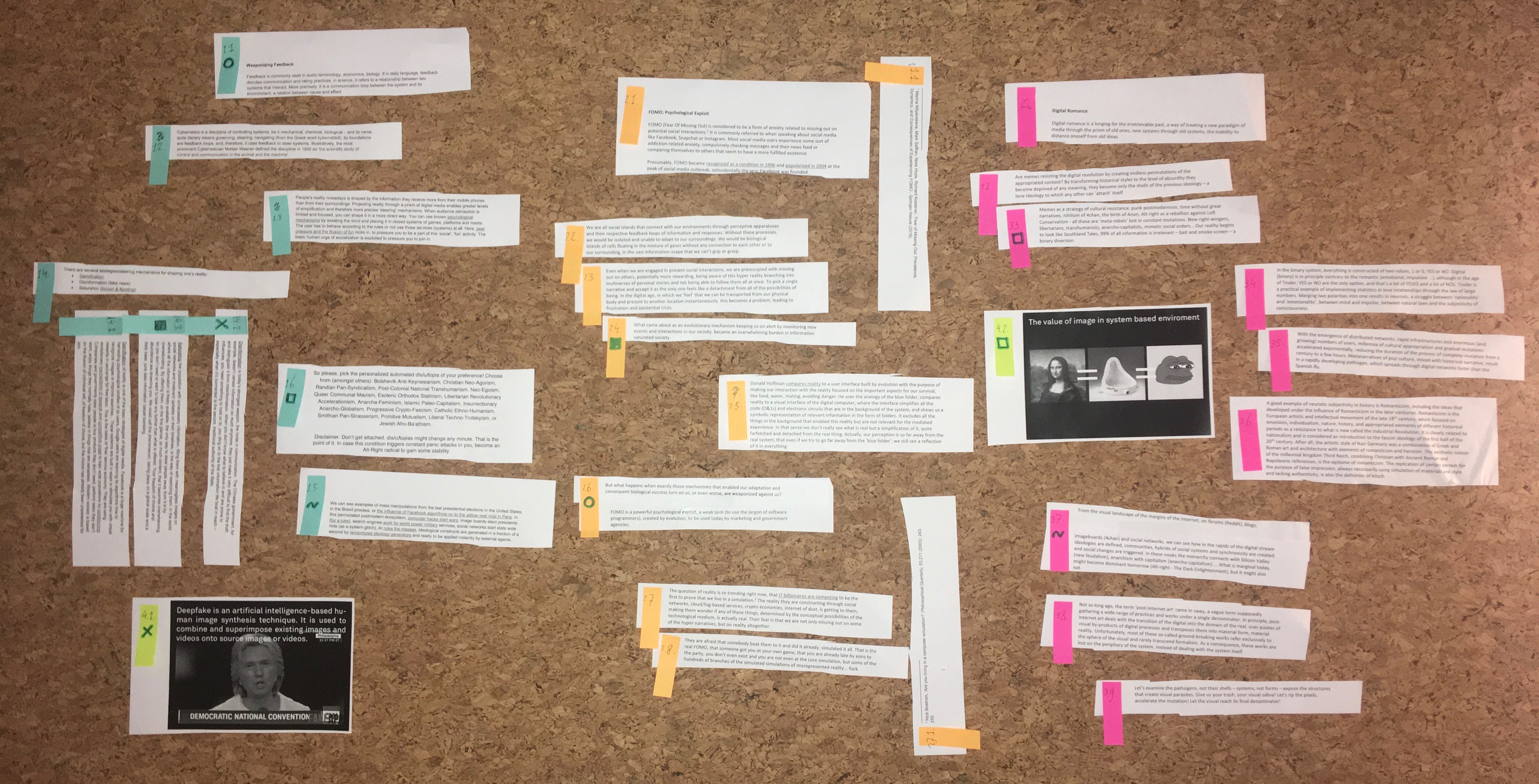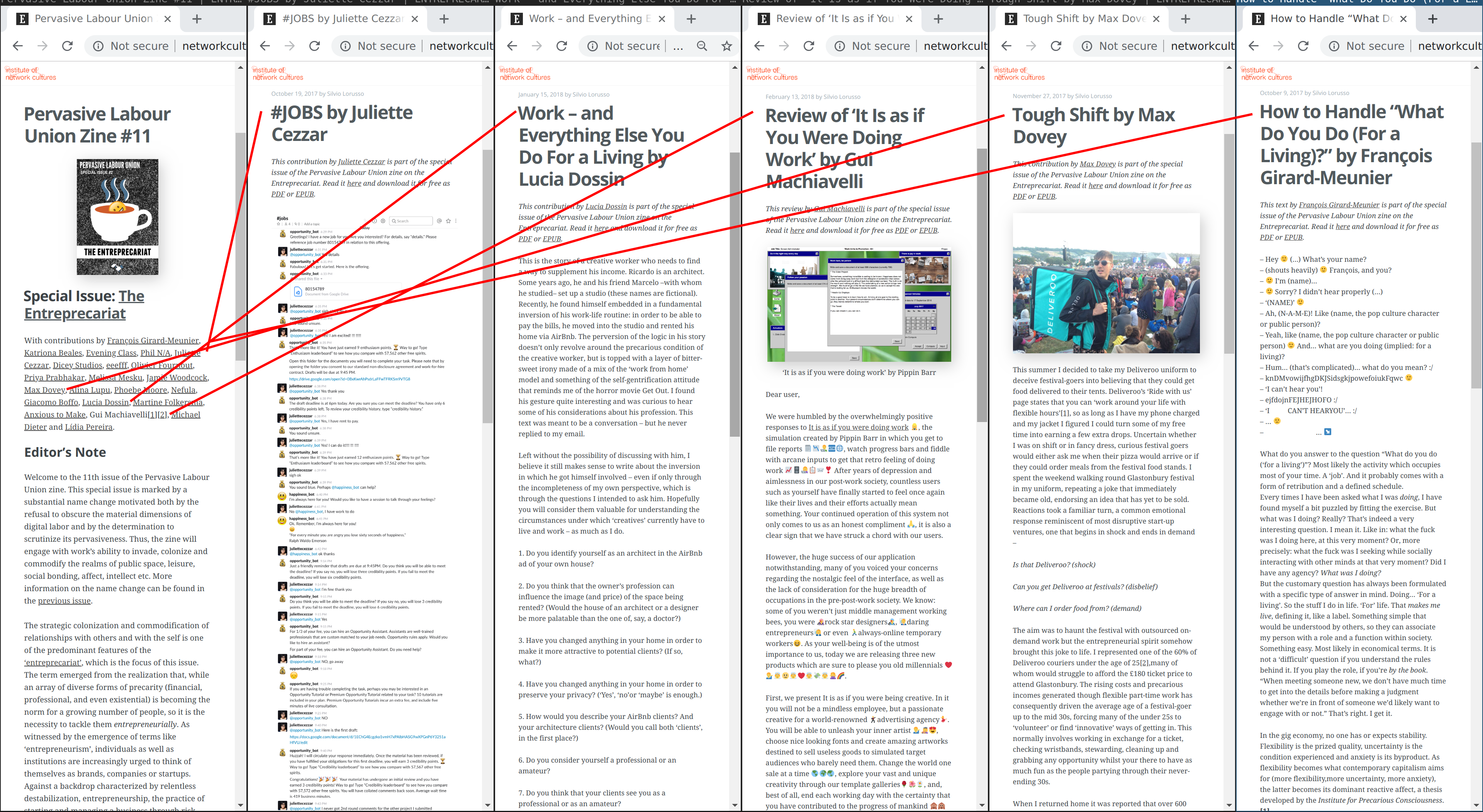Testing a manual for a modular publishing process.
What are the implications of modularity for the various steps in the publishing process and the resulting ‘stand-alone object’? This was the research question one of the Making Public subgroups started out investigating. As a midway result, we developed and tested a manual that focuses on the start of the modular publishing process, where editor and author work on the content together. The main challenge of a modular publishing process, it showed, lies in how to manage and structure your content when you look for other ways of organising the material than the straightforward, A-Z narrative. Below we go into the set-up of our test and retrace some of our findings.
Modularity is a way to produce a (digital, paper, or hybrid) publication with speed and high quality. We take inspiration for the use of modular processes from software development. Modules can be re-used but are still flexible. They allow for a publishing workflow that is open to many different publications and designs, while still facilitating a structured (time-saving) process.
However, modularity can also be used to conceive of a publication in a different way from the usual, linear, A-Z model. In this sense modular publishing is a way to position a publication differently as well. It asks for other conceptions of how a text works, what kinds of modules (videos, images, quotes, audio, etc.) would be desirable, and how all the modules might interrelate. Modularity then is not just a part of the (technical) production workflow, but involves the presentation of the content and editorial decisions made. This could result in a different way of writing and reading, other ways to tell stories and of presenting research.

Fig 1: left: linear A-Z model, right: modular model.
After having discussed these issues in our subgroup extensively and playing with content from the publishers that participate in our subgroup in modular structures, we started testing how this modular way of thinking about both form and content of a publication works for other writers, editors and publishers. For this purpose we developed a manual that focuses on the start of the modular publishing process.
We asked our participants to first select suitable content to work with during the test. It could be text and/or audio-visual material, around 5-8 items that have some kind of connection with each other. It should be content they know well and something of which they expect it to be suitable for different ways of publishing, for example in a modular, non-linear, or interlinking way. The (hypothetical) resulting publication would be digital or hybrid, thus possibly including multiple (media) formats, but these formats are not necessarily present from the start.
After selecting the material we asked the participants to:
- analyse the content in several steps, defining its parts, elements, and the relationships – both the interrelationships between the parts and those between the elements and part;
- reflect on what working and thinking through these steps added to their ideas about the publication and its concept;
- report whether it gave them valuable insights with regards to the structure, the relation between form and content, and the possibilities for enrichment;
- speculate how this could lead to other ways of writing, reading, or building an argument.
We recommended to carry out the test on print-outs of the material, which could then be laid out, cut up, interconnected with strings, colour coded, photographed, etc. All these steps were documented by taking pictures. Figure 2, 3 and 4 show examples of ways of visualizing the parts, elements and relationships of the respective materials.

Fig 2. Amateur Cities – UrgentCity interview series

Fig 3. Sepp Eckenhaussen – Hrvoje Hiršl

Fig 4. Silvio Lorusso – Pervasive Labour Union Zine
The test made clear that this workflow of analysing and visualizing the editorial structure of the content, allows to spot gaps in the material in both the level of parts (like an introduction) and elements (images, block quotes etc.). It is therefore able to make explicit certain relationships that were not obvious before, especially on an editorial level.
Next to that it was noted that working in such a modular process could be useful when the materials consist of a wide variety of media outlets, as for instance is the case with conference proceedings. Those can consist of abstracts, presentation slides, audio or video recordings of the event, live notes in Google-docs, blog reports, tweets, and potentially background interviews. Getting them all together in a comprehensive way can be a challenge and this workflow could make this process faster and less cumbersome.
On the other hand the test made clear that in this modular publishing process it was difficult to decide on relationships and how finely grained you should define the elements. How do you define what is still a valuable element? Does this happen on the level of sentences or separate words? In short, where do you start and where do you stop? Also finding a balance between structuring the content in a linear or non-linear way was described as being difficult.
Working in this modular way also seems to set criteria for the content. This test worked on existing material, so to say in hindsight, but it is interesting to see that it gives clues about how to start the process, that is, when creating new material with an eye to a modular publication. A module should be able to function on its own and thus be more self-explanatory. An image might for instance be required to always have a caption. This way of working also invites the author or editor to think about including the relationships already when making the material.
Overall one of the main surprises and insights of the test is that it functions for the editors as a way to reflect on their editorial decisions. Having to think through the definition and relations of the parts, elements and relationships, and especially arriving at a visual overview of them, gave the participants an insightful distance to their content. As a result they saw unexpected and valuable relationships and conceptualized additional parts or elements that could enrich the content.
Reflecting on these insights we re-evaluated the initial goal of our subgroup. Instead of focusing on developing a modular publishing framework for standalone modular publications that is reusable and visually and technically customizable, we realized that our main focus should be on aiding the initial phase of the editorial publishing process. We now set as our goal to develop a manual enriched with tools to facilitate an editorial process that leads to a modular digital stand-alone publication. It will facilitate the author, editor and/or publisher to reflect on the structure of the publication by forcing them to think through the different parts, elements and relationships, and by visualizing this structure. Next to facilitating their own reflection, these visualisations will also make it possible to explain, give insight in, and to discuss this structure with others in the publishing process, like a developer or designer or even reader.
Our next steps will be to collect and analyse already existing tools that facilitate such an editorial workflow and that help visualizing the editorial structure of a collection of content. From there we will add to and fine-tune our initial manual. It is necessary to critically think through how this manual can help manage complex structures of content in either linear or non-linear ways; to further investigate what pitfalls are part of this workflow by looking closely at what editorial steps authors, editors and publishers need to go through to be able to set up a publishing process that leads to modular publications, and to test what role visualizations can play in this process.
Stay tuned for updates on all those things!


